|
The current moment is rife with “posts”: Post-Cold War, post-Communist, post 9-11, post-modern, post-colonial, post-national… Blogs embody decentralized communities of “post-ers” who together determine everything from what’s hip to the next revolution, offering a faux-reality of democratic access and collectivist practice. Even waste is “post-consumer content” in green-marketed products, transforming the idea of sustainability into objects of desire. But what is left to us when we’re offline? If the “post”—the “after”—is an ersatz existence, where consumer culture and the virtual world are seductive stand-ins for genuine lived experience, how do we come to terms with the reality of our decidedly less than ideal cultural, social, political, and even material positions? How do we respond to the precariousness of what threatens to become a post-democratic moment? Forced to roll with the punches of a surreal existence where displacement from homes, work spaces and communities is commonplace, a group of New York-based artists has found a way to make striking work within unexpected parameters. Chaotic, good-humored and clever, the works of David Ellis, José Enrique Krapp and Phoebe Washburn share a ramshackle aesthetic that is as playful as it is precarious. They improvise in making their work, reflecting survival strategies for uncertain times. All three use everyday materials that explore the dichotomy between waste and usefulness, and assemble them prosaically by mechanical means that resist old-fashioned notions of the artist as genius in favor of the artist as builder or tinkerer. What really stands out, however, is their shared exploration of what I’d like to posit as the basic paradigms of viewer experience: - passive viewer, active artwork - active viewer, active artwork - active viewer, passive artwork (Since the presence of an audience is central to each of the artists’ work, we will leave aside the fourth, dull, and mercifully irrelevant category of passive viewer, passive artwork.) By directing their practice toward audience engagement rather than a marketable product, they forcefully turn us to face the realm of the real. Though David Ellis’ Trash Talk series appears to fall into the category of passive viewer, active artwork, it evokes the often viciously hilarious verbal battles best known outside the African-American community in its least elevated and most antiquated form in “Yo Mama” jokes (Yo mama wears combat boots; Oh, yeah? Well yo mama…). The 2008 exhibition, The Dozens, takes as its title an alternate name for such nonviolent street fights. The series title is also a pun, as the main work, Heap, is a tremendous, over-lifesize heap of trash: old shopping carts, spackle and paint buckets, cardboard and plastic packaging, garbage bags, broken umbrellas, wooden pallets, and whatever else looked good as Ellis trolled through the streets of the Chelsea gallery district looking for art materials. In his scavenging and piling, he finds objects that might have a special sonic or emotional resonance. A tremendous investment of real time, effort, and elbow grease is involved, along with the development of an unusually intimate relationship with the materials that art galleries consider waste. This confrontation with the reality of detritus resulting from art market consumerism allows him a unique means by which to explore the structures and mechanisms of his world, digging deeply into its underbelly and not just looking at its pretty face. In this way his art making becomes an expedition, an Odyssey, something authentic to fill the void of virtual living in the old sense, where virtual connotes something that exists in effect, but not in actual fact. It also constitutes a reversal from his parallel practice of graffiti art; whereas graffiti brings art into the streetscape and activates the urban fabric, in Heap Ellis brings the street into the gallery and calls it art. None of this, however, addresses the role of Heap in The Dozens as a kind of foul-mouthed actor invading the pristine exhibition space of Roebling Hall gallery, New York. Like a mad, homeless wunderkind who forced his way into a fancy art gala, the work sprawls in a drunken mess (though thankfully not a smelly one) about the space. Upon entering, the viewer is accosted by a cacophany of rude thumps and impudent crashes, as various parts of the trash heap spring to life and engage in a staccato sparring, with each trying to shout down the other. Hidden within the pile are mechanical parts of player pianos that have been carefully calibrated in collaboration with the composer Roberto Lange to create an abstract percussive musical composition with an undeniably funky beat. “This,” it seems to say, “is the shit.” Impure in the extreme, the sculpture wows us with its tour de force technical complexity as well as its visual and aural assault, creating a tool for new ways of thinking about our environment, and creative possibilities for survival and intellectual endeavor in an irretrievably degraded world. José Enrique Krapp makes survival machines, but you’d never mistake them for Le Corbusier’s machines for living. Quirky to the point of absurdity, they are somewhere between a kid’s backyard fort and a pyschopathic survivalist’s remote cabin in the woods. He thinks of them as playful stabs at preparing for whatever calamities the world might throw at him, with a full awareness that a calamity is defined in part precisely as the tragic result of a lack of preparedness. Safety is an illusion, and security impossible, but why not have fun along the way? His choices of what to include on his wheeled carts are motivated by a combination of practicality and whimsy, reflecting an idiosyncratic view of the what is useful. Flashlights and oxygen tanks are lashed to the sides, but so, too, are rubber balls and receptacles for decks of playing cards. Special compartments are built with care for cigarettes and whisky bottles, and a wooden cube-shaped seat reveals its secret purpose as a beer cooler when the lid is removed. Though we are active, and the work passive, it creates opportunities for community. We can share a drink or a smoke with the artist, or take his decidedly non-Corbusian machines for living for a stroll. Should tragedy strike, we can even record our last confessions with the microphone and tape recorder provided, at least until the next person comes along to unwittingly wipe away our voices forever as they record their own over ours, as in Moble Confessional : Tell Me Everything… 2007. The absurdity and futility of Krapp’s work could be viewed as negative or nihilistic, but it is instead more productive to think of the works as rare opportunities for adult play. Because the works operate in the realm of art, grown-ups are given permission to dawdle under the cover of “participating in the artist’s intention.” The works are thus not only the result of creative endeavor, but invite it, and create the conditions for a bona fide personal engagement of the sort that can only be made when you’re up close and personal. Ranging from fantastical environments fashioned improbably from once-quotidian materials to entire functioning systems of production, consumption and waste, Phoebe Washburn’s work takes us on a wild ride through a somehow familiar but entirely untrodden landscape. Like David Ellis, Washburn spends much time collecting materials for her installations, including found items such as cardboard used for packing and purchased items like off-tints of paint (where the desired color was not matched) and lumber. Like Krapp, her work has a quality of childlike inventiveness, where the work performed has no real function beyond the satisfaction it brings, and the creation of an environment to occupy, as in Nothing’s Cutie, 2004. However, the power of her work is such that one almost fails at first to recognize the radically transformed materials, and is instead overwhelmed by the tremendous physical and emotional impact of the installations. In her most recent installation, Tickle the Shitstem, 2008 (Zach Feuer Gallery, New York), she takes this further, creating a kind of factory system that, as its title implies, produces a good deal of waste. The work is a tour de force of false productivity, faux industriousness, like a cartoon factory. As we watch it wash the color out of old T-shirts and produce a foul drink from the waste water, we are invited to drink actual mass-produced and vividly colored soft drinks to make bottles available as receptacles from Washburn’s curious concoction. Made a part of her system, we consider its function, which is more a place for the eyes to linger and a terrain for the mind to wander than a means for the manufacture of any useful product. Here, the viewer and work alike are active, but the purpose of such activity remains very much in question. Burdened by the history of opposition between socialist and democratic political systems, we have arrived at a place where the disappointed hopes of both systems are obvious, and the idea of unifying them fraught with land mines, both real and intellectual. Art has been similarly burdened by a requirement to signify political and social meaning. Whether cynically producing products for the market, propping up or criticizing a specific policy, regime, state of affairs or set of social mores, it is endlessly invoked in support of, or opposition to various positions. However, the unique contribution by the group of early and mid-career installation artists represented by David Ellis, José Enrique Krapp, and Phoebe Washburn offers an alternative. Perhaps by retaining the old-fashioned modernist notion that aesthetics belong in its own separate sphere, protected from use-value on even (or especially) the ideological level, the work creates a space for play and imagination, where neither market forces nor the need to crank out a product are the point: the recovery and rehabilitation of the aesthetic experience as one of true freedom and authenticity becomes the goal of art, rather than its byproduct, and is thus a powerful weapon in the battle for an honest existence.
Recommended articles

|
|
We’re constantly hearing that someone would like to do some joint project, organize something together, some event, but… damn, how to put it... we really like what you’re doing but it might piss someone off back home. Sure, it’s true that every now and then someone gets kicked out of this institution or that institute for organizing something with Divus, but weren’t they actually terribly self…
|

|
|
An American poet was invited to the White House in order to read his controversial plagiarized poetry. All tricked out and ready to do it his way, he comes to the “scandalous” realization that nothing bothers anyone anymore, and instead of banging your head against the wall it is better to build you own walls or at least little fences.
|

|
|
Why political intellectuals, do you incline towards the proletariat? In commiseration for what? I realize that a proletarian would hate you, you have no hatred because you are bourgeois, privileged, smooth-skinned types, but also because you dare not say that the only important thing there is to say, that one can enjoy swallowing the shit of capital, its materials, its metal bars, its polystyrene…
|

|
|
Contents of the new issue.
|
|







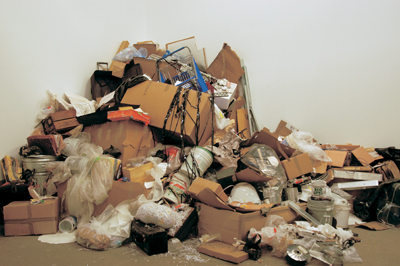
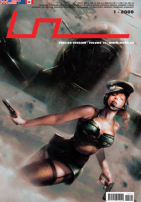















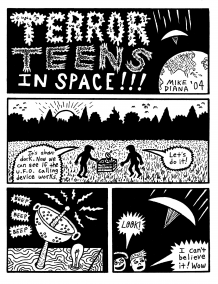




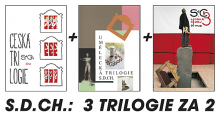
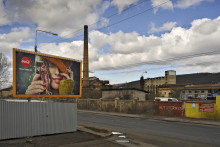
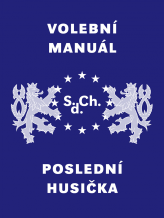
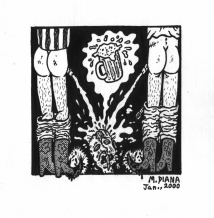


 We Are Rising National Gallery For You! Go to Kyjov by Krásná Lípa no.37.
We Are Rising National Gallery For You! Go to Kyjov by Krásná Lípa no.37.
Comments
There are currently no comments.Add new comment